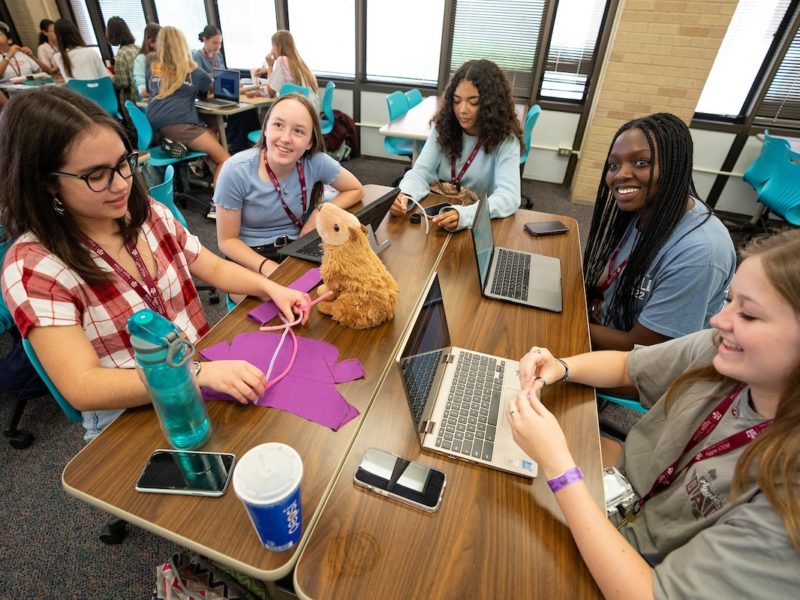Why Are Some Students Forgotten In Gifted Education?

More than three million students in the United States are identified as gifted – meaning they perform at a remarkably high level of accomplishment when compared to others of the same age. Research has shown traditional methods of identifying these students overlook millions of children from underrepresented groups, but they are not very hard to find.
Karen Rambo-Hernandez, associate professor in the Texas A&M University College of Education & Human Development’s Department of Teaching, Learning and Culture, studies access for all students to high-quality education. One of her main interests is in the area of gifted education.
“Unfortunately, student access to opportunities still falls along racial and socio-economic lines. Students who come from privileged backgrounds have better access to opportunities,” Rambo-Hernandez said. “These students also tend to have parents with more social capital and knowledge of the educational system, which enables them to more effectively advocate for gifted services. The over-reliance on using national norms to identify students for services tends to over-identify these students who come from privilege.”
Local Vs. National Norms
Students are usually identified for gifted services by achieving the highest scores based on national comparisons. Rambo-Hernandez points out that this identification process fails to consider student context and access to opportunities.
Instead, she suggests these students should be identified via local norms, meaning students would be chosen based on their performance within their school.
“If the school has the capacity to serve 5% of its students, then the top 5% get served regardless of how these students performed using national standards,” Rambo-Hernandez said.
In her latest research paper, Rambo-Hernandez hypothesized that using national norms would identify fewer African American and Latinx students than using local norms. The research team decided that if local norms improve identification rates by at least 20%, then the switch is worth it.
“Because schools tend to pull from neighborhoods of students with similar opportunities, backgrounds and experiences, the average achievement at schools varies dramatically,” Rambo-Hernandez said. “Every school has students who are performing at the high range of achievement for that school and have academic needs that are unlikely to be met by the school’s typical instruction or curriculum. These students may not qualify for gifted services if those services are only based on national norms.”
The hypothesis was tested on a sample of more than three million third grade students. Findings showed improvements in identification rates of up to 300% by shifting from looking at local student rankings instead of national student rankings.
Recommendations For School Districts
Rambo-Hernandez and other gifted researchers recommend two elements be included in all identification for gifted students:
- Universal screening: every student gets screened for gifted services.
- Local norms for identification: students are selected to receive gifted services based on their relative performance to their peers at their own school.
“I encourage schools and districts to think about how they plan to serve students before they start the identification process. Once the services have been decided, use universal screening and local norms to identify the students who would be most likely to benefit or need those planned services,” Rambo-Hernandez said. “This implies that the identification process used needs to align to the services that the students would receive. We need to continue to focus on the services those students receive after their identification.”
While these identification changes may require some small additional training for teachers and other staff, Rambo-Hernandez believes it would be beneficial for both the district and the students. The changes would result in a gifted population that looks a lot more like a cross-section of the U.S.
This article by Ashley Green originally appeared on the College of Education website.





